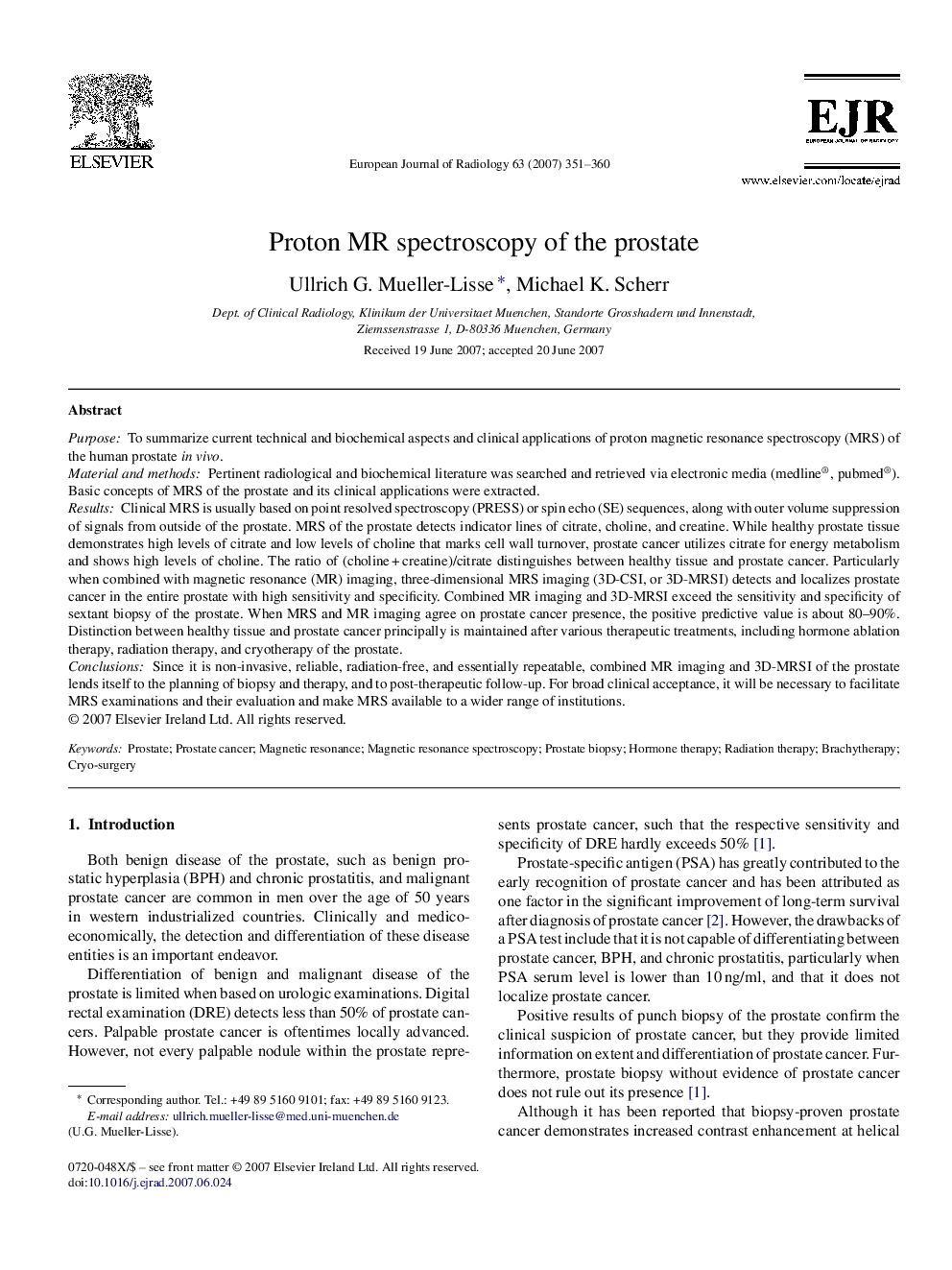| کد مقاله | کد نشریه | سال انتشار | مقاله انگلیسی | نسخه تمام متن |
|---|---|---|---|---|
| 4227983 | 1609848 | 2007 | 10 صفحه PDF | دانلود رایگان |

PurposeTo summarize current technical and biochemical aspects and clinical applications of proton magnetic resonance spectroscopy (MRS) of the human prostate in vivo.Material and methodsPertinent radiological and biochemical literature was searched and retrieved via electronic media (medline®, pubmed®). Basic concepts of MRS of the prostate and its clinical applications were extracted.ResultsClinical MRS is usually based on point resolved spectroscopy (PRESS) or spin echo (SE) sequences, along with outer volume suppression of signals from outside of the prostate. MRS of the prostate detects indicator lines of citrate, choline, and creatine. While healthy prostate tissue demonstrates high levels of citrate and low levels of choline that marks cell wall turnover, prostate cancer utilizes citrate for energy metabolism and shows high levels of choline. The ratio of (choline + creatine)/citrate distinguishes between healthy tissue and prostate cancer. Particularly when combined with magnetic resonance (MR) imaging, three-dimensional MRS imaging (3D-CSI, or 3D-MRSI) detects and localizes prostate cancer in the entire prostate with high sensitivity and specificity. Combined MR imaging and 3D-MRSI exceed the sensitivity and specificity of sextant biopsy of the prostate. When MRS and MR imaging agree on prostate cancer presence, the positive predictive value is about 80–90%. Distinction between healthy tissue and prostate cancer principally is maintained after various therapeutic treatments, including hormone ablation therapy, radiation therapy, and cryotherapy of the prostate.ConclusionsSince it is non-invasive, reliable, radiation-free, and essentially repeatable, combined MR imaging and 3D-MRSI of the prostate lends itself to the planning of biopsy and therapy, and to post-therapeutic follow-up. For broad clinical acceptance, it will be necessary to facilitate MRS examinations and their evaluation and make MRS available to a wider range of institutions.
Journal: European Journal of Radiology - Volume 63, Issue 3, September 2007, Pages 351–360